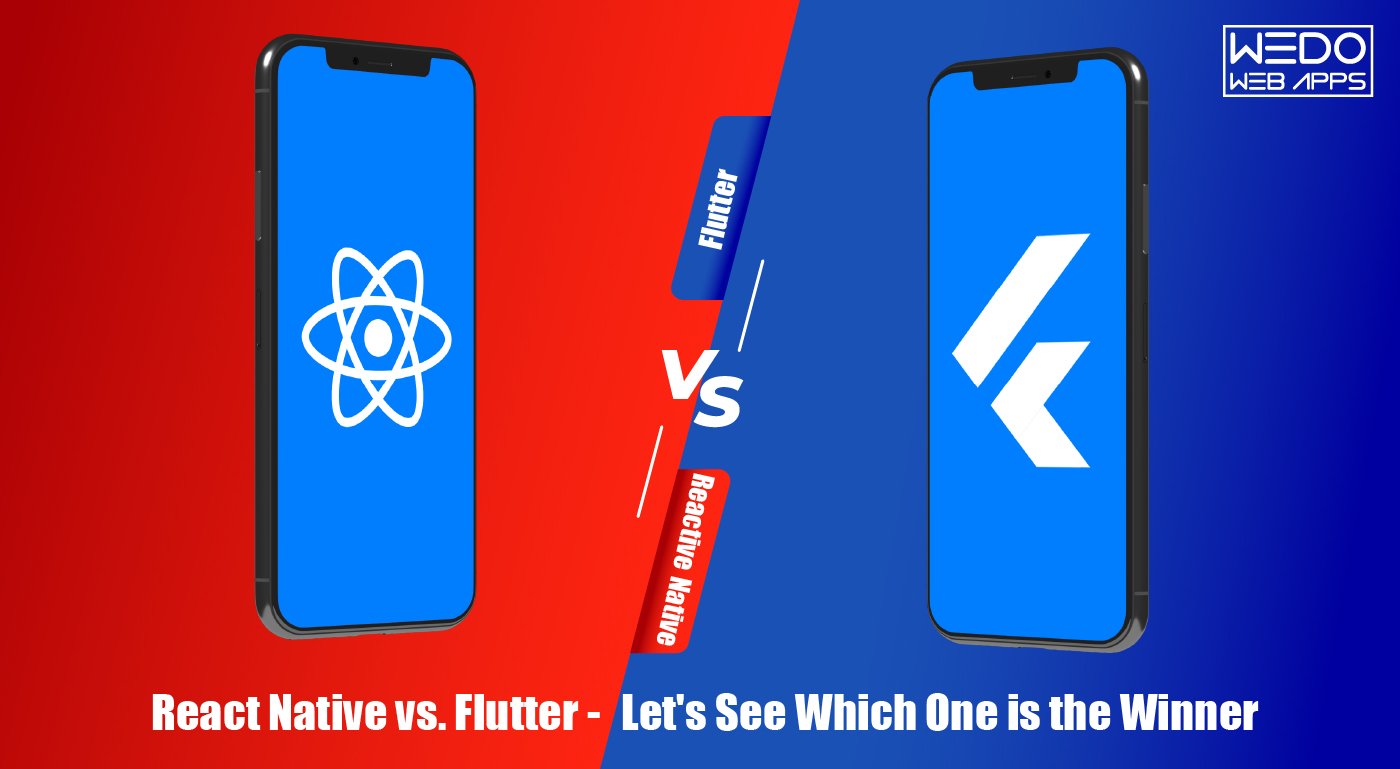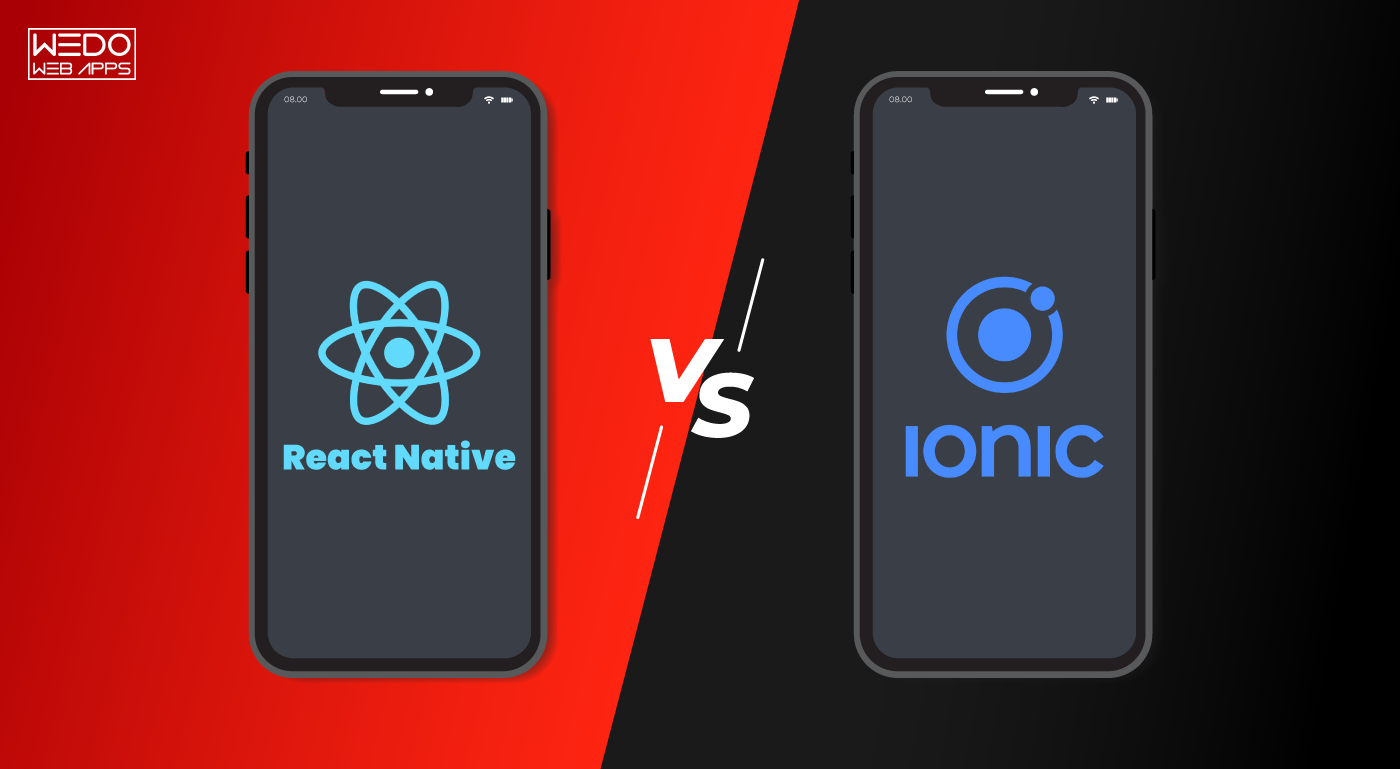React Native by Facebook and Flutter by Google. These are the two hot cross-platform app development technologies creating a fuss in the digital world. Mobile Applications are the essential source to extend the business. An average individual spends over 90% of the online time using mobile and web applications. Application Development should be approached in such a manner that the apps can be used by everyone similarly.
Due to the growing popularity, every business is looking for applications to survive in the competitive market. Most importantly, companies are looking for options to build a mobile app that is compatible with Android and iOS. For this, the developers in the market need to learn so many technologies. Companies are switching to cross-platform app development over native solutions to build the applications for Android and iOS with faster speed and fewer resources to solve this problem.
Out of the various options available online, Flutter and React Native are the two best cross-platform development frameworks for mobile application development.
React Native is an open-source platform built by Facebook in 2015. It has easy access to the native UI components, and you can also reuse the code. Along with access to top-quality third-party libraries, it also has a hot reload feature. In comparison, Flutter was developed and open-sourced by Google in 2017. Flutter contains a vibrant ecosystem with maximum customization. Like React Native, Flutter App Development also has a reload feature, but the advantage is, it offers a faster code compilation feature. Hence, when React Native and Flutter are compared, Flutter has the edge over its competitors.
React Native is already a mature tool, but Flutter has also started gaining popularity since its launch in 2017. In this article, we’ll see a React Native vs. Flutter comparison on various exciting criteria.
React Native vs. Flutter – A Developer’s ViewPoint
-
Based on Programming Language
Cross-Platform App Development Frameworks can use only one programming language to develop an app for all platforms. React Native App Development Services uses JavaScript Programming Language, which is the dynamically typed language for all the platforms. ReactJS is a JavaScript library especially used for making user interfaces.
On the other hand, Flutter uses Dart Language. Dart was launched by Google in 2011 and is primarily similar to all the other programming languages. It is a coding language that developers quickly adopt because it is very expressive. However, JavaScript has been around for so long that developers prefer React Native against Flutter. Dart also has a great feature set, but it’s lesser-known and used by the developer community. With reference to the above information, React Native wins a point in the programming language category. -
Design & Graphics – Capabilities of React Native and Flutter
Although React Native and Flutter use entirely different approaches to design user interfaces for the apps, both have excellent features as a whole. Any of these technologies could achieve pixel-perfect graphics and complete appealing animations. React Native inherits native visual elements and appearances like buttons and navigation bar. These elements provide a seamless, personalized experience to the user. In case of the updated OS, the app elements will be upgraded respectively and maintain the nativeness and similarity to other native applications.
With React Native, the apps will look slightly different on Android and iOS devices, whereas with Flutter, the apps will look the same for all the OS Versions or Device models. Unlike React Native, navigation and the elements will remain the same unless intentionally changed by the software developer. With additional efforts, a personalized Native feel and look can be achieved for both the platforms individually, ready-made with React Native. -
Architecture
While studying the React Native vs. Flutter comparison, it is crucial to understand both the cross-platforms’ technical architecture. React Native Architecture relies on the JavaScript Runtime environment, which is also known as JavaScript Bridge. It provides a path to communicate with the native modules, which means the JavaScript code compilation is done into the native code at runtime. React Native uses the Flux architecture from Facebook. JSON messages are used to communicate between the two sides, which requires a smooth User Interface.
When Flutter is compared with React Native in terms of its architecture, it contains most of the required components. It reduces the need for a bridge for communication. Flutter uses frameworks like Cupertino and Material Design; and uses skia engines for its purpose. Therefore, the Flutter App Development is more stable as compared to react native app development services.
Read also: Which is going to dominate in the future, React Native or Flutter?
-
Setup and Project Configuration
The process of setting up the developer machine to use the new framework is time-consuming. Proper guidelines are necessary to set up a framework. React Native does not provide a sufficient blueprint for the setup. Flutter, on the other hand, provides proper guidelines to install the framework properly. In the React Native guide, there are a few guidelines for using the XCode tools. However, it does not provide sufficient information for the setup.
Flutter Doctor is a CLI(Command Line Input) tool that provides developers with detailed guidelines to install the setup efficiently. It inspects which tools are already installed on the local machine and which tools need to be configured. By using Flutter App Development, you can also configure your project efficiently. Therefore, it is clear that Flutter provides a much better CLI Support and a proper blueprint for setting up the framework properly. -
UI Components and Development API
It is necessary to have a proper API to access the native modules. When developing cross-platform mobile apps, the framework must have an API to access the native modules easily. The core React Native framework provides the UI rendering and device access APIs. React native is dependent on third-party libraries for app development. Conversely, Flutter Framework comes with UI Rendering and device access APIs, navigation, and many other libraries.
Using the rich set of Flutter will reduce the use of third-party libraries. Flutter also has the tools that allow the developers to render the UI on Android and iOS. Flutter Framework has everything you need to develop a mobile application. -
Adoption and Popularity
React Native is used in top-rated applications like Facebook, Instagram, Skype, etc. React Native App Development Services have been around since 2015, so the organizations and the developers have spent a lot of time working with it. Hence, it is clear that React Native has higher popularity and is adopted by the best applications online.
On the other hand, the very first stable mobile application of Flutter came in December 2018. Flutter is relatively new, but it is still used by many famous companies like Alibaba, Tencent, etc. Within a significantly less time frame, Flutter also has gained popularity and is now used by so many esteemed organizations for app development. -
Developer Productivity
A productive developer is vital to develop the apps faster. Productivity is essential to be able to develop mobile applications with focus and efficiency. If the developer is experienced, then it’s easy to use the skills for cross-platform app development. As explained above, React Native has a hot reload feature which saves a lot of developer’s time while testing the changes in the user interface. In React Native, developers can use any IDE(Integrated Development Environment) or text editor of their choice.
Conversely, Flutter also has a reload feature, and it’s relatively easy to start with a demo app. Nonetheless, as the apps’ complexity grows, developers would have to learn the new concepts of Flutter. Moreover, Dart is not a commonly used programming language and is not supported by many IDEs or text editors. React Native is a matured framework and has many developer support when IDEs and text editors are considered. -
Analytics
Both the cross-platforms use external apps like google analytics, AppsFlyer, etc., for the analytical solutions. Flutter does not have any problem with the performance using any of the analytical tools. On the other hand, React Native app’s performance can sometimes be affected if there are many analytical solutions to be reported.
Finally, Which One Wins the Battle – React Native vs. Flutter?
If we compare React Native and Flutter, it is evident that Flutter is one hand ahead of React Native. Flutter is better in terms of performance, compatibility, UI Components, and Development APIs. However, when it comes to finding productive and skilled developers for app development, React Native has significant popularity and is adopted by many businesses.
Conclusion
React Native and Flutter both are parallel. Both the cross-platforms have their pros and cons. React Native can be the best choice in terms of experienced developers and productivity, and Flutter can be a good option if you want to use a new platform. Many industry experts have predicted that Flutter can be the future of cross-platform app development until React Native community keeps updating itself. Well, it isn’t easy to choose between the two. Flutter has very strongly entered the app development industry, and it is a bit difficult to predict the future. So let’s wait and watch which one comes out to be a winner of this race.

